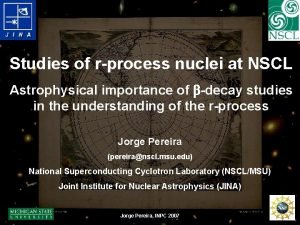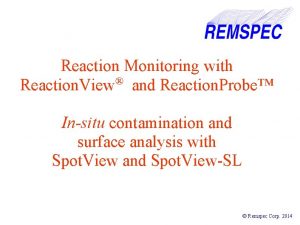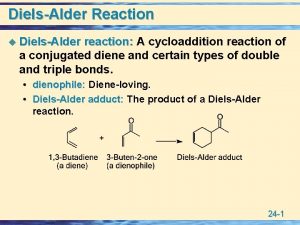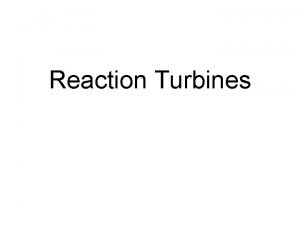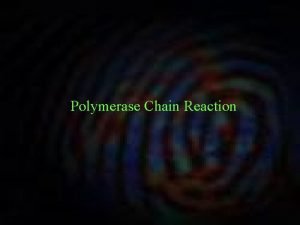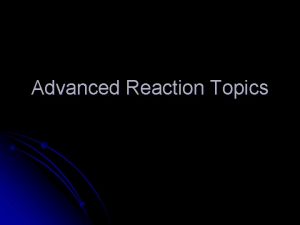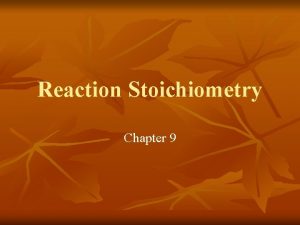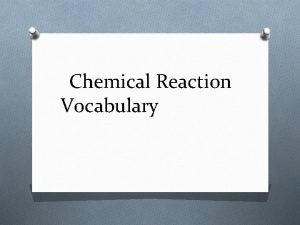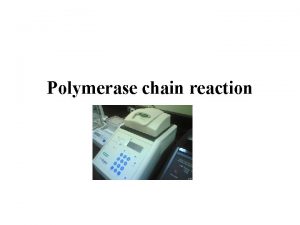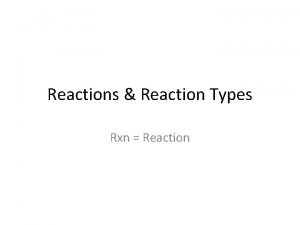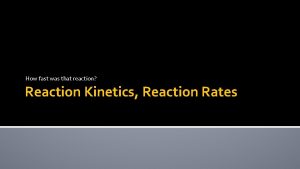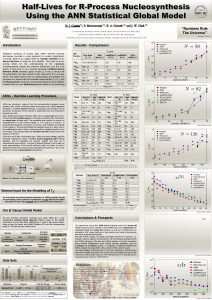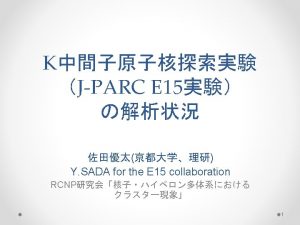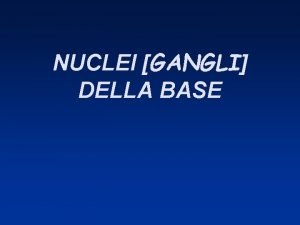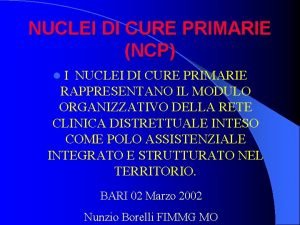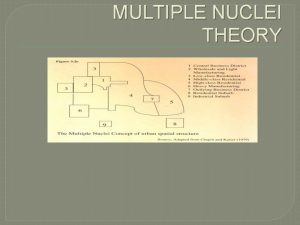Understanding rprocess nuclei using the d p reaction




















![(n, ) direct capture calculations • G. Arbanas [ORNL] using the code Cupido (F. (n, ) direct capture calculations • G. Arbanas [ORNL] using the code Cupido (F.](https://slidetodoc.com/presentation_image_h2/93f4c75036a9fdd0453046eebd594d9a/image-21.jpg)
![Reaction Calculations 132 Sn(d, p)133 Sn[854] By Neil Summers Tuesday, October 24, 2006 HRIBF Reaction Calculations 132 Sn(d, p)133 Sn[854] By Neil Summers Tuesday, October 24, 2006 HRIBF](https://slidetodoc.com/presentation_image_h2/93f4c75036a9fdd0453046eebd594d9a/image-22.jpg)



- Slides: 25

Understanding r-process nuclei using the (d, p) reaction on exotic beams Kate Jones University of Tennessee • N=50 and N=82 shell closures and the r-process • 83 Ge and 85 Se: crossing the N=50 shell closure • Shell model calculation of N=51 isotones • First data from 132 Sn(d, p) Tuesday, October 24, 2006 HRIBF Astro Kate Jones

Important nuclear physics measurements for the r -process HRIBF yields N=82 Neutron magic-number nuclei are most important Important measurements: Close to shell closure Low Q value for (n, ) Low level density Small capture cross section Statistical model not reliable Direct capture important Tuesday, October 24, 2006 • N ~ closed shell Mass, t 1/2 • N = closed shell + 1 Sn (neutron separation energy) neutron single-particle structure ® (d, p) on closed shell nuclei HRIBF Astro Kate Jones

(d, p) reactions in inverse kinematics Silicon detector p 132 Sn beam (RIB) CD 2 target (deuteron) 133 Sn recoil Recoil Detector Unfavorable kinematics → Reduced Q-value Resolution Rare Ion Beams (RIBs) are difficult and expensive to produce Applicable to all isotopes which can be made into a beam Tuesday, October 24, 2006 Kate Jones HRIBF Astro

Crossing N=50: 83 Ge and 85 Se Possible r-process line N=50 Only known property of 83 Ge is t 1/2 * Ex (Me. V) 2 * Winger, J. A. et al. , Phys. Rev. C 38, 285 (1988) Tuesday, October 24, 2006 1/2+ 1 ? 83 Ge ? 5/2+ 85 Se 87 Kr 89 Sr 91 Zr from ENSDF www. nndc. bnl. gov HRIBF Astro Kate Jones

82 Ge(d, p) 1000 silicon detector array 0 recoil 3000 4000 Kate Jones coinci S Ioniza ΔE (channels) IC proton TAC 2000 Tuesday, October 24, 2006 counts / 2 ns

83 Ge results θlab 105° 127° 149° 0 1200 2400 Ep (ke. V) 3600 4800 ΔEcm≈ 300 ke. V from the Se doublet Q = 1. 47 ( 0. 02 stat. , 0. 07 sys. ) Me. V The large width of the first group (ΔEcm≈ 460 ke. V) and the absence of other levels below Ex = 1 Me. V suggest two states. J. S. Thomas PRC 71 (2005) 021302 Tuesday, October 24, 2006 1 st Ex = 280 ( 20 stat. ) ke. V Sn(83 Ge) = 3. 69 ± 0. 07 Me. V Δ(83 Ge) = – 61. 25 ± 0. 26 Me. V HRIBF Astro Kate Jones

83 Ge results cont: Angular distributions 2 H(82 Ge, p)83 Ge Results are consistent with: l = 2 ground state (d 5/2) l = 0 1 st excited state (s 1/2) at Ex=280 ke. V Spectroscopic Factors Measure single-particle nature of state g. s. S = 0. 48 ± 0. 14 1 st S = 0. 50 ± 0. 15 Tuesday, October 24, 2006 HRIBF Astro Kate Jones

85 Se data 2145. 8 2136. 8 1444. 0 1437. 6 1114. 9 461. 9 0. 0 85 Se Ex Energy levels from β- decay J. P. Omtvedt, et al. , Z. Phys. A 339, 349 (1991). 4 groups are populated, including g. s. and 1 st excited Angular distributions show l = 2 ground state and l = 0 1 st excited state g. s. S = 0. 33 ± 0. 09 (d 5/2) 1 st S = 0. 30 ± 0. 08 (s 1/2) Tuesday, October 24, 2006 HRIBF Astro Kate Jones

Shell model �calculations: N=51 Calculations by D. Dean, 2 -body interaction M. Hjorth-Jensen SPE’s from Andres Zucker. 83 Ge 85 Se Tuesday, October 24, 2006 87 Kr 89 Sr HRIBF Astro 91 Zr Kate Jones

The Neutron-rich tin isotopes 16 O 132 Sn 124 Sn Sb Z = 50 In Stable Doubly magic N = 82 Double shell closure Z=50, N=82 132 Sn(d, p) in progress, 130 Sn(d, p) to follow Tuesday, October 24, 2006 HRIBF Astro Kate Jones

Reaction Calculations CCBA 132 Sn(d, p) @ 630 Me. V By Neil Summers Tuesday, October 24, 2006 HRIBF Astro Kate Jones

132 Sn(d, p) detectors Plan View Beam View ORRUBA telescopes ORRUBA 1000μm �� 6 x ORRUBA 1000μm � 5 x 5 cm 2 telescopes Beam � Beam SIDAR �� ORRUBA 1000μm ORRUBA telescopes Tuesday, October 24, 2006 HRIBF Astro Kate Jones

132 Sn(d, p) photo ORRUBA detectors (back angles) SIDAR detectors (back angles) Tuesday, October 24, 2006 HRIBF Astro Kate Jones

132 Sn(d, p) Y R A Ep(channels) P L E R N I M I Tuesday, October 24, 2006 data • Forward telescope 2 • Energy and position from E detector • Calculated energy loss added • E = 63 m • TAC gated (MCP downstream) p (channels) HRIBF Astro Kate Jones

132 Sn� (d, p) data + kinematics calculations Ep(channels) (11/2 -) 3700 (5/2 -) (1/2 -) (9/2 -) 2004. 6 1655. 7 1560. 9 (3/2 -) 853. 7 (7/2 -) 0. 0 1. 45 s p 1/2? Tuesday, October 24, 2006 p (channels) HRIBF Astro [1] P. Hoff PRL 77(1996)1020 Kate Jones

Q-value plot Y R A P Y L E R R E V N I IM g. s EP (channels) Ex Tuesday, October 24, 2006 HRIBF Astro Kate Jones

Summary and Comments • N=51 Ø Completed 82 Ge(d, p) and 84 Se(d, p) Ø Measured Sn (mass) for 83 Ge Ø Measured angular distributions Ø Extracted spectroscopic factors • 132 Sn(d, p) Ø Measurement still in progress Ø Can see at least 3 previously measured states Ø See hint of p 1/2, should be able to measure in final analysis • 130 Sn(d, p) to come! Tuesday, October 24, 2006 HRIBF Astro Kate Jones

Collaboration • RIBENS / Center of Excellence collaboration Ø ORNL D. Bardayan, J. Blackmon, M. Smith, C. Nesaraja, D. Shapira, F. Liang Ø ORAU M. Johnson Ø UT KLJ, K. Chae, Z. Ma, B. Moazen Ø Rutgers University J. Cizewski, S. Pain, R. Hatarik, P. O’Malley Ø Tennessee Tech Ray Kozub, J. Shriner, S. Paulauskas, J. Howard, D. Sissom Ø University of Surrey J. Thomas, C. Harlin, N. Patterson Ø Colorado School of Mines U. Greife, R. Livesay, L. Erikson Ø Ohio University A. Adekola Ø Furman A. Gaddis Tuesday, October 24, 2006 HRIBF Astro Kate Jones

Shell model calculations: 83 Ge Ex (Me. V) 1. 5 1. 0 0. 5 1/2+ 5/2+ Expt Calculations from Alex Brown (private communication). Skyrme mean field, adjusted to reproduce the global single particle energies Theory Calculation of 83 Ge [A. Brown, MSU] predicts stronger shell closure than seen in HRIBF 82 Ge(d, p)83 Ge experiment Tuesday, October 24, 2006 HRIBF Astro Kate Jones

N=83 Systematics Tuesday, October 24, 2006 HRIBF Astro Kate Jones
![n direct capture calculations G Arbanas ORNL using the code Cupido F (n, ) direct capture calculations • G. Arbanas [ORNL] using the code Cupido (F.](https://slidetodoc.com/presentation_image_h2/93f4c75036a9fdd0453046eebd594d9a/image-21.jpg)
(n, ) direct capture calculations • G. Arbanas [ORNL] using the code Cupido (F. Dietrich) to calculate direct capture for 88 Sr, 84 Se and 82 Ge Ø Cupido (F. Dietrich) compared with TEDCA calculations from T. Rausher Ø Used SF from HRIBF measurements Ø Koning-Delaroche global optical potential • E 1 capture of p-wave neutrons dominates capture cross section into both 83 Ge and 85 Se. • Semidirect capture through the GDR reduces cross section by ~10% • Results show capture cross sections that are a factor of 10 down from that into 89 Sr (stable case) Tuesday, October 24, 2006 HRIBF Astro Kate Jones
![Reaction Calculations 132 Snd p133 Sn854 By Neil Summers Tuesday October 24 2006 HRIBF Reaction Calculations 132 Sn(d, p)133 Sn[854] By Neil Summers Tuesday, October 24, 2006 HRIBF](https://slidetodoc.com/presentation_image_h2/93f4c75036a9fdd0453046eebd594d9a/image-22.jpg)
Reaction Calculations 132 Sn(d, p)133 Sn[854] By Neil Summers Tuesday, October 24, 2006 HRIBF Astro Kate Jones

Nuclear data input into r-process calculations From (d, p) Q-value, Ex, ℓ-value, Spec Factor Calculate (n, γ) cross section Use to modify residual interactions in nuclear structure (shell) model Improve global masses for n-rich nuclei Input into Supernova Code Tuesday, October 24, 2006 HRIBF Astro Kate Jones

Other utility of (d, p) reactions - masses r-process waiting point approximation • r-process involves thousands of (n, ) reactions • Nuclear masses are needed Ø to calculate energy released in the r-process Ø to calculate capture cross sections with a Statistical model Ø for the “waiting point approximation” used in many rprocess calculations • (d, p) reactions can measure masses Ø Precision adequate for r-process studies Ø Requires reacceleration Tuesday, October 24, 2006 Kate Jones HRIBF Astro

New shell model calculations • New effort by David Dean & M. Hjorth-Jensen to calculate all neutron-rich N=51 nuclei simultaneously • Working with excitations built on a 78 Ni core • Cannot currently reproduce measured spacing of 1 st excited state energies for n-rich N=51 nuclei • Appears necessary to activate g 9/2 protons - which will significantly enlarge model space • Very preliminary results - work in progress Tuesday, October 24, 2006 HRIBF Astro Kate Jones
 Rate of reaction formula
Rate of reaction formula Addition reaction and substitution reaction
Addition reaction and substitution reaction Leukoerythroblastic reaction vs leukemoid reaction
Leukoerythroblastic reaction vs leukemoid reaction Activity formula
Activity formula Hát kết hợp bộ gõ cơ thể
Hát kết hợp bộ gõ cơ thể Bổ thể
Bổ thể Tỉ lệ cơ thể trẻ em
Tỉ lệ cơ thể trẻ em Gấu đi như thế nào
Gấu đi như thế nào Glasgow thang điểm
Glasgow thang điểm Chúa yêu trần thế
Chúa yêu trần thế Các môn thể thao bắt đầu bằng tiếng nhảy
Các môn thể thao bắt đầu bằng tiếng nhảy Thế nào là hệ số cao nhất
Thế nào là hệ số cao nhất Các châu lục và đại dương trên thế giới
Các châu lục và đại dương trên thế giới Cong thức tính động năng
Cong thức tính động năng Trời xanh đây là của chúng ta thể thơ
Trời xanh đây là của chúng ta thể thơ Cách giải mật thư tọa độ
Cách giải mật thư tọa độ Phép trừ bù
Phép trừ bù độ dài liên kết
độ dài liên kết Các châu lục và đại dương trên thế giới
Các châu lục và đại dương trên thế giới Thơ thất ngôn tứ tuyệt đường luật
Thơ thất ngôn tứ tuyệt đường luật Quá trình desamine hóa có thể tạo ra
Quá trình desamine hóa có thể tạo ra Một số thể thơ truyền thống
Một số thể thơ truyền thống Cái miệng nó xinh thế chỉ nói điều hay thôi
Cái miệng nó xinh thế chỉ nói điều hay thôi Vẽ hình chiếu vuông góc của vật thể sau
Vẽ hình chiếu vuông góc của vật thể sau Thế nào là sự mỏi cơ
Thế nào là sự mỏi cơ


























